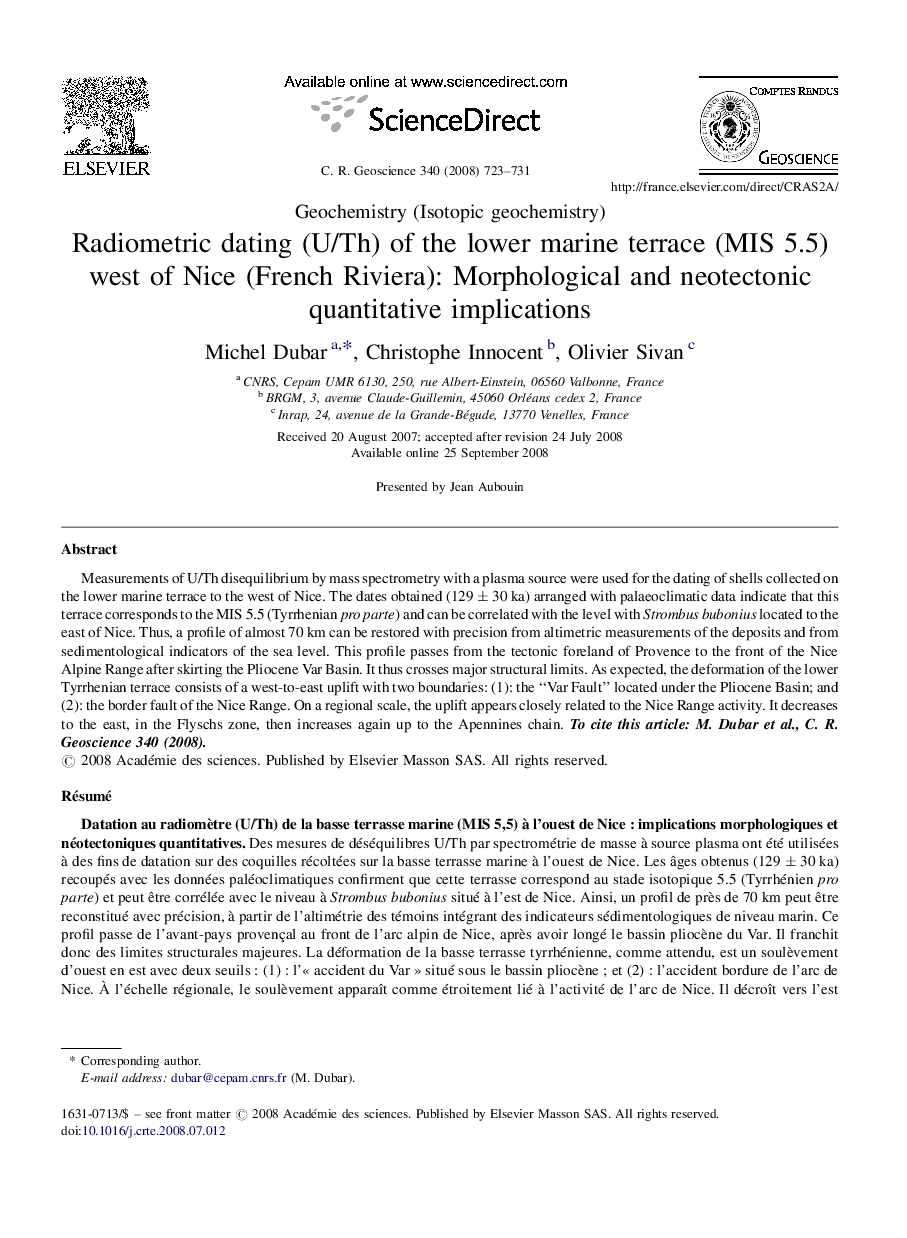| کد مقاله | کد نشریه | سال انتشار | مقاله انگلیسی | نسخه تمام متن |
|---|---|---|---|---|
| 4462927 | 1313534 | 2008 | 9 صفحه PDF | دانلود رایگان |

Measurements of U/Th disequilibrium by mass spectrometry with a plasma source were used for the dating of shells collected on the lower marine terrace to the west of Nice. The dates obtained (129 ± 30 ka) arranged with palaeoclimatic data indicate that this terrace corresponds to the MIS 5.5 (Tyrrhenian pro parte) and can be correlated with the level with Strombus bubonius located to the east of Nice. Thus, a profile of almost 70 km can be restored with precision from altimetric measurements of the deposits and from sedimentological indicators of the sea level. This profile passes from the tectonic foreland of Provence to the front of the Nice Alpine Range after skirting the Pliocene Var Basin. It thus crosses major structural limits. As expected, the deformation of the lower Tyrrhenian terrace consists of a west-to-east uplift with two boundaries: (1): the “Var Fault” located under the Pliocene Basin; and (2): the border fault of the Nice Range. On a regional scale, the uplift appears closely related to the Nice Range activity. It decreases to the east, in the Flyschs zone, then increases again up to the Apennines chain.
RésuméDes mesures de déséquilibres U/Th par spectrométrie de masse à source plasma ont été utilisées à des fins de datation sur des coquilles récoltées sur la basse terrasse marine à l’ouest de Nice. Les âges obtenus (129 ± 30 ka) recoupés avec les données paléoclimatiques confirment que cette terrasse correspond au stade isotopique 5.5 (Tyrrhénien pro parte) et peut être corrélée avec le niveau à Strombus bubonius situé à l’est de Nice. Ainsi, un profil de près de 70 km peut être reconstitué avec précision, à partir de l’altimétrie des témoins intégrant des indicateurs sédimentologiques de niveau marin. Ce profil passe de l’avant-pays provençal au front de l’arc alpin de Nice, après avoir longé le bassin pliocène du Var. Il franchit donc des limites structurales majeures. La déformation de la basse terrasse tyrrhénienne, comme attendu, est un soulèvement d’ouest en est avec deux seuils : (1) : l’« accident du Var » situé sous le bassin pliocène ; et (2) : l’accident bordure de l’arc de Nice. À l’échelle régionale, le soulèvement apparaît comme étroitement lié à l’activité de l’arc de Nice. Il décroît vers l’est dans la zone des flyschs, puis croît de nouveau en direction des Apennins.
Journal: Comptes Rendus Geoscience - Volume 340, Issue 11, November 2008, Pages 723–731